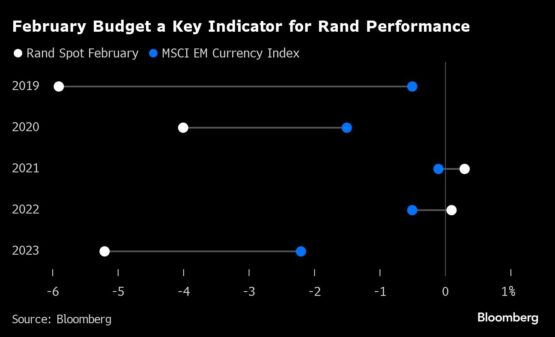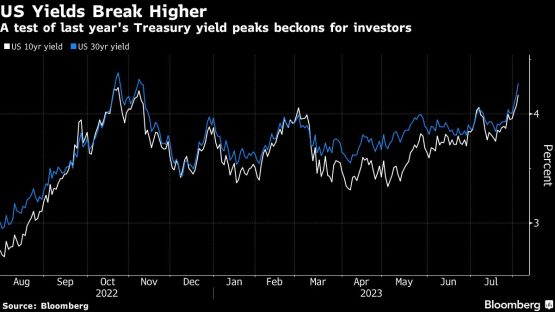Three Federal Reserve officials on Monday said policymakers will need to raise interest rates further this year to bring inflation back to the central bank’s goal.
“We’ve made a lot of progress in monetary policy, the work that we need to do, over the last year,” Federal Reserve Vice Chair for Supervision Michael Barr told a Bipartisan Policy Center meeting on Monday. “I would say we’re close, but we still have a bit of work to do.”

Michael Barr, vice chair for supervision at the US Federal Reserve.
The Fed held interest rates steady in June after raising them for 10 straight meetings to a range of 5% to 5.25%. Most policymakers expect to increase rates by a further half percentage point by the end of the year, according to projections released after their June gathering.
“We’re likely to need a couple more rate hikes over the course of this year to really bring inflation back into a path that’s along a sustainable 2% path,” San Francisco Fed President Mary Daly said at the Brookings Institution in Washington.
Cleveland Fed chief Loretta Mester, speaking at an event hosted by the University of California, San Diego, said her own view also “accords with” Fed officials’ median forecast for two more rate increases.
“In order to ensure that inflation is on a sustainable and timely path back to 2%, my view is that the funds rate will need to move up somewhat further from its current level and then hold there for a while as we accumulate more information on how the economy is evolving,” she said.
Balancing risks
The FOMC next meets July 25-26 and is widely expected to resume rate increases at that meeting.
Daly said the risks of doing too little to curb inflation still outweigh the risks of doing too much, though the gap between those two is narrowing. The San Francisco Fed chief said she is starting to see signs of the economy slowing, and added that supply and demand are coming into better balance.
A July 7 report from the Bureau of Labor Statistics showed job growth slowed last month, though pay gains remained robust. Mester said the current rate of wage growth is still “well above the level consistent with 2% inflation given current estimates of trend productivity growth.”
Core inflation remains a concern for the Fed. While the personal consumption expenditures price index rose in May at the slowest annual pace in more than two years, PCE minus food and energy climbed an annual 4.6% in May, suggesting underlying inflation remains sticky.
“Inflation is our No. 1 problem,” Daly said.
Fed officials will also receive new inflation data this week, with the Wednesday release of a monthly BLS report on consumer prices. Forecasters surveyed by Bloomberg expect it to show prices excluding food and energy advanced 0.3% last month, with the year-over-year rate of increase moderating to 5%, according to the median estimate.
Atlanta Fed President Raphael Bostic said that while the rate of inflation is too high, policymakers can be patient for now amid evidence of an economic slowdown — a stance at odds with many of his colleagues.
“I have the view that we can be patient — our policy right now is clearly in the restrictive territory,” Bostic told the Cobb County Chamber of Commerce in Atlanta. “We continue to see signs that the economy is slowing down, which tells me the restrictiveness is working.”
© 2023 Bloomberg




